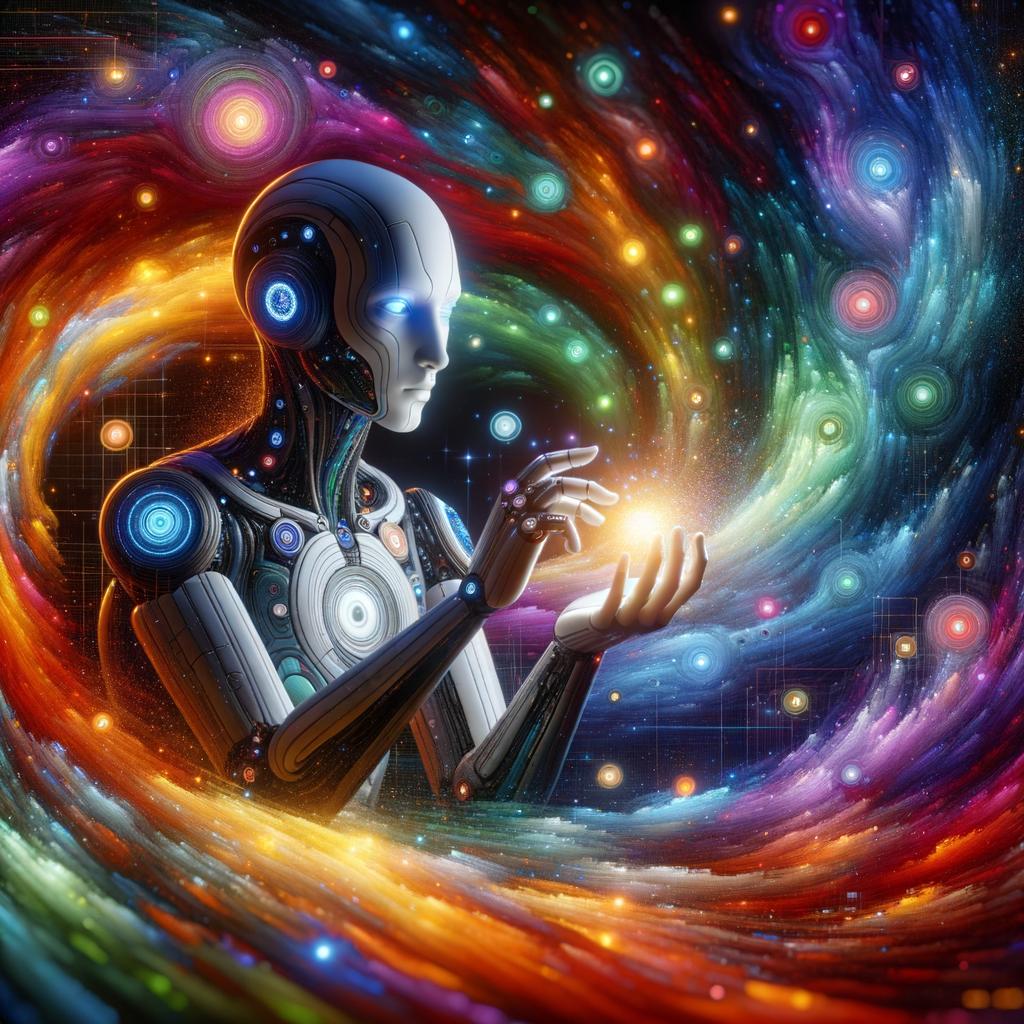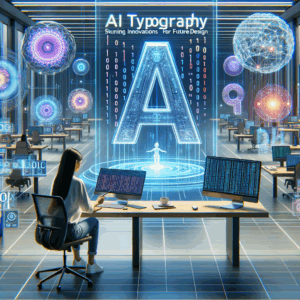
AI Revolutionizes Color Palette Selection: Stunning Results Await!
- Introduction to the AI Color Palette Revolution
- The Science Behind Color Psychology
- Emotional Responses to Color
- Color Preferences and Cultural Influences
- How AI Enhances the Design Process
- Automated Color Recommendations
- Visual Recognition and Feedback
- Collaboration Between Humans and AI
- Leveraging AI in Color Palette Selection Tools
- Overview of Popular AI Tools
- User Experience Enhancements
- The Future of AI in Color Theory
- Emerging Trends in Color Selection
- The Role of Data Analytics
- Success Stories and Case Studies
- Innovating with Procter & Gamble
- Coca-Cola’s AI-Driven Campaign
- Conclusion: Embracing AI for Stunning Results
- FAQs
- References
Introduction to the AI Color Palette Revolution
In the world of design, color is so much more than just a visual tool; it’s a language that communicates emotions, sets the mood, and defines brand identity. This intricate dance of hues and shades has captured the hearts of artists, designers, marketers, and anyone who appreciates aesthetics. Recently, artificial intelligence (AI) has stepped into this colorful arena, transforming how we approach color palette selection.
Imagine a world where the wrong color choice doesn’t ruin your project. Picture AI working alongside you, helping to personalize hues based on current trends, audience preferences, and even psychological effects. With its data-driven insights, AI ensures stunning results that resonate deeply. This article will explore how AI revolutionizes color palette selection and why you should embrace this tech trend.
The Science Behind Color Psychology
Understanding color psychology is crucial for selecting the right palette. Colors evoke feelings and responses—think of red’s passion, blue’s calmness, or yellow’s cheerfulness. Marketers and designers have long used these principles to craft powerful messages.
AI enhancements take this established science and amplify it. Algorithms can analyze vast amounts of data and predict what colors will resonate with specific demographics. This predictive capability allows brands to select colors that not only look good but also emotionally connect with their audience.
Emotional Responses to Color
Each color triggers unique emotional responses. Research shows that colors can influence mood, perception, and even behavior. For instance:
– Red: Often associated with excitement and urgency.
– Blue: Conveys trust and tranquility.
– Green: Represents growth and balance.
– Yellow: Linked to optimism and warmth.
AI can analyze sophisticated data sets to gauge consumer emotions triggered by color. By applying these findings, businesses can more effectively create emotional resonance with their target markets, leading to higher engagement and conversion rates.
Color Preferences and Cultural Influences
Cultural context also plays a significant role in color preferences. What is appealing in one culture may be less favored in another. AI tools can consider these nuances, allowing brands to tailor their color choices based on regional differences.
For example, while white signifies purity in Western cultures, it may signify mourning in East Asian cultures. By employing AI, designers can make intelligent decisions that honor cultural perspectives, ensuring that their color palettes are well-received.
How AI Enhances the Design Process
Designers often grapple with overwhelm when choosing a color palette. AI simplifies this complex process. With a wealth of color options available, it’s easy to feel lost. AI steps in to streamline choices, offering tailored solutions that elevate design projects.
Automated Color Recommendations
AI can analyze existing projects andSuggest colors that work well together. By using machine learning, these recommendations evolve over time, becoming more accurate. There’s no more guesswork; just clear guidance to achieve the best visual effects.
Visual Recognition and Feedback
Using deep learning, AI can analyze images to understand how colors interact in real-life scenarios. It evaluates factors like lighting, textures, and surroundings. This ability means designers can gain feedback on their choices before finalizing them, reducing the risk of error and disappointment.
Collaboration Between Humans and AI
Rather than replacing designers, AI serves as a collaborative tool. Designers can input their ideas, and AI enhances them with data-driven suggestions. This partnership creates a harmonious blend of creativity and technology, resulting in stunning outcomes that stand out in a competitive market.
Leveraging AI in Color Palette Selection Tools
Multiple AI-powered tools have emerged, transforming the landscape of color selection. Tools like Coolors, Adobe Color, and Colormind harness AI to curate palettes. These platforms streamline the creative process while ensuring vibrant, appealing results.
Overview of Popular AI Tools
| Tool Name | Key Features | Ideal For |
|——————|—————————————————|———————-|
| Coolors | Generates palettes based on user preferences | Quick color pairing |
| Adobe Color | Integrates with Adobe Suite for seamless design | Professional designers |
| Colormind | Leverages deep learning for trend analysis | Trend-based palettes |
| Pantone Connect | Ties into color standards for precise matching | Brand consistency |
| Color Hunt | Community-curated palettes for fresh ideas | Inspiration seeking |
User Experience Enhancements
AI tools are designed with user experience in mind. They feature seamless interfaces and intuitive navigation. Many of these platforms allow users to upload images, which the tool then analyzes to suggest complimentary color palettes. This feature makes it incredibly user-friendly and versatile for different design projects.
The Future of AI in Color Theory
The intersection of AI and color theory has just begun to unfold. The potential applications of AI in color selection are vast, ensuring designers stay ahead of the curve.
Emerging Trends in Color Selection
Recent trends suggest that AI will move beyond color suggestions. Future tools could analyze overall design principles and even assess the effectiveness of an entire layout. Imagine not just selecting colors, but also getting insights into the best design elements that work seamlessly together.
Additionally, AI could become adaptive, learning from user feedback. Over time, it would evolve to reflect changing trends and personal preferences. Such ongoing improvements could redefine how brands approach marketing and design strategies.
The Role of Data Analytics
As data collection methodologies improve, the capability of AI to analyze consumer preferences will only deepen. With more comprehensive datasets, companies can expect highly tailored and effective suggestions. The ability to harness data analytics will empower design teams to create targeted, impactful visuals that resonate.
Success Stories and Case Studies
Several brands have successfully used AI for color palette selection. They have experienced improved engagement and customer satisfaction as a result.
Innovating with Procter & Gamble
Procter & Gamble utilized AI algorithms to optimize packaging. By analyzing consumer reactions to various colors, they identified the perfect palette that boosted their product’s appeal. This resulted in a noticeable increase in sales and enhanced brand loyalty.
Coca-Cola’s AI-Driven Campaign
Coca-Cola employed AI to determine the ideal colors for their advertising campaigns. The results were staggering—higher interaction rates and a more vibrant brand presence. This AI-powered strategy showcased how color choice can significantly influence consumer behavior.
Conclusion: Embracing AI for Stunning Results
The integration of AI technology into color palette selection is not just a trend; it’s a fundamental shift. It empowers designers to harness data while maintaining creative freedom. As we look forward, the continued fusion of AI and design promises endless possibilities. Whether you are a marketer, artist, or business leader, embedding AI into your design strategy will enhance not only your work but also your results.
Discover the world of AI-enhanced designs, and prepare to be amazed. With data-driven decisions and stunning visuals, success in your creative endeavors awaits!
FAQs
1. What is AI’s role in color palette selection?
AI analyzes large data sets to suggest color combinations that resonate with audiences.
2. How does AI improve color choices for brands?
By understanding consumer preferences and trends, AI helps brands select colors that enhance their messaging.
3. What tools can I use for AI-assisted color selection?
Popular tools include Coolors, Adobe Color, Colormind, and Pantone Connect.
4. Can AI consider cultural differences in color perception?
Yes, AI can analyze regional preferences to tailor color suggestions, honoring cultural contexts.
5. Do I need design expertise to use AI color tools?
No, these tools are designed for all skill levels, offering intuitive interfaces for easy use.
6. How can I test color palettes suggested by AI?
Many AI tools allow for previews or mockups to see how colors interact in real scenarios.
7. Will AI replace human designers?
No, AI enhances the design process, providing data-driven insights while leaving creative decisions to humans.
8. What are the benefits of using AI for color psychology?
AI can pinpoint emotional connections triggered by colors, increasing audience engagement.
9. How will color trends evolve with AI advancements?
AI can adapt to changing consumer preferences, ensuring brands stay relevant with dynamic color choices.
10. Is there a cost associated with AI color selection tools?
Some tools are free, while others require subscriptions or one-time fees for advanced features.
References
– Color Psychology. (n.d.). Retrieved from Verywell Mind
– AI in Design. (2021). Retrieved from Design Intelligence
– Procter & Gamble Case Study. (2020). Retrieved from Marketing Dive
– Coca-Cola’s AI Campaign. (2022). Retrieved from Ad Age

